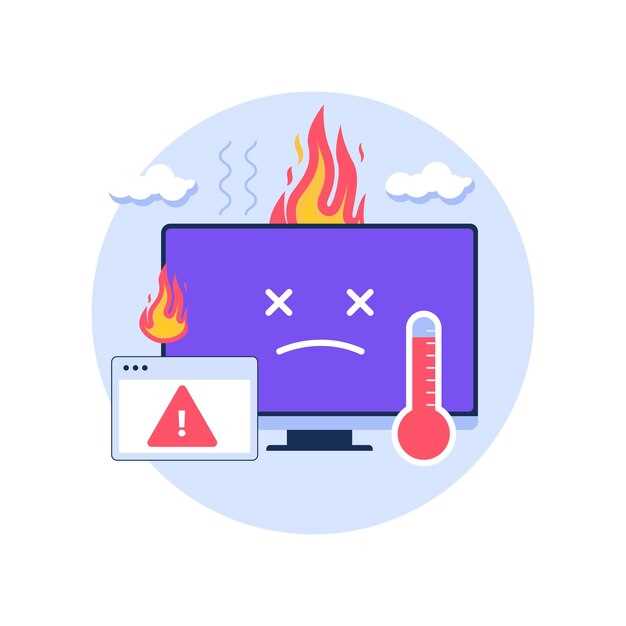What Causes Overheating and How to Prevent It

Overheating is a significant issue that can affect both vehicles and machinery, leading to costly repairs and unsafe operating conditions. In many cases, the root of the problem lies in the engine’s cooling system, where coolant plays a pivotal role. The primary function of coolant is to regulate the temperature of the engine, preventing it from exceeding safe limits. A malfunction in this system can result in severe overheating, ultimately compromising engine performance and longevity.
Identifying the causes of overheating is crucial for timely intervention. Common factors include low levels of coolant, faulty thermostats, or even blockages within the cooling system. Each of these issues can lead to a significant rise in engine temperature, putting added strain on components and potentially causing a breakdown. Understanding these causes not only helps in diagnosing overheating issues but also assists in implementing effective prevention strategies.
To mitigate the risks associated with overheating, regular maintenance and monitoring of coolant levels are essential. Ensuring that your engine’s cooling system is functioning optimally not only enhances performance but also prolongs the life of the vehicle or machinery. By following proactive maintenance tips and being aware of the signs of overheating, individuals can take comprehensive steps to safeguard their machines from potential damage.
Identifying Common Causes of Engine Overheating

Engine overheating can lead to severe damage and costly repairs. Understanding the common causes is crucial for effective prevention. One primary reason for overheating is low coolant levels. Coolant is essential for regulating engine temperature, and a deficiency can disrupt this balance.
Another frequent issue is a faulty thermostat. When the thermostat fails to open or close properly, it can restrict coolant flow, causing the engine to overheat. Regular checks can help identify thermostat issues before they escalate.
A malfunctioning water pump is also a common culprit. The water pump ensures the coolant circulates throughout the engine. If it breaks down or becomes inefficient, coolant flow is impaired, leading to overheating problems.
Additionally, a blocked radiator can prevent efficient heat dissipation. Dirt, debris, or internal corrosion can clog the passages of the radiator, limiting its ability to cool the coolant effectively. Regular cleaning and maintenance can help avoid this situation.
Finally, worn or damaged hoses can lead to coolant leaks. If hoses are not in good condition, they may split or rupture, resulting in a sudden loss of coolant and subsequent engine overheating. Inspecting hoses for wear and replacing them as needed is essential for maintaining optimal coolant levels.
How to Check and Maintain Your Coolant Levels
Regularly checking and maintaining your coolant levels is essential for preventing engine overheating. The coolant, typically a mixture of water and antifreeze, helps dissipate heat from the engine, ensuring it operates within a safe temperature range.
To check your coolant levels, first, ensure the engine is cool to avoid burns. Locate the coolant reservoir, usually a translucent plastic tank connected to the radiator. Inspect the side of the reservoir to see the fluid level. If the level is below the recommended minimum mark, it needs to be topped up.
When adding coolant, use the type specified by your vehicle’s manufacturer. Mixing different types of coolant can lead to chemical reactions that reduce effectiveness and cause overheating. If you need to add coolant, pour it slowly into the reservoir until it reaches the appropriate level.
It’s also important to regularly inspect your cooling system for any leaks. Look for signs of puddles under the vehicle, damp stains on the engine, or a decrease in coolant levels over time. If you suspect a leak, have it inspected by a professional to prevent overheating.
Maintaining the coolant involves periodic flushing of the cooling system. Over time, contaminants can accumulate, reducing the cooling efficiency. Consult your vehicle manual for recommended intervals for coolant replacement or flushing to ensure optimal performance and prevent overheating.
In summary, maintaining proper coolant levels and ensuring the cooling system is in good working order are critical steps in preventing engine overheating. Regular checks can save you from costly repairs and ensure your vehicle runs smoothly.
Practical Steps to Prevent Overheating During Summer Driving

Overheating can cause significant damage to your vehicle, especially during the sweltering summer months. To avoid this potentially costly situation, it’s crucial to take proactive steps to ensure your car remains cool while driving. Here are some practical measures to consider.
First, regularly check your vehicle’s coolant levels. Coolant is essential for regulating engine temperature, so make it a habit to inspect the reservoir every few weeks. If levels are low, top them up with the appropriate fluid as specified in your owner’s manual.
Next, monitor the condition of your radiator and hoses. Look for any signs of wear, leaks, or blockages. A clean radiator will efficiently dissipate heat, while damaged hoses can lead to coolant leaks and subsequent overheating. Consider flushing the radiator system at least once a year for optimal performance.
Additionally, keep an eye on your temperature gauge while driving. If you notice the temperature rising significantly, pull over safely and let the engine cool before inspecting the issue. Ignoring the gauge can lead to severe engine damage.
Using the air conditioning can significantly increase engine load, potentially leading to overheating. Use air conditioning wisely, and if it is not necessary, consider opening windows instead to maintain a comfortable cabin temperature without overworking the engine.
Furthermore, avoid heavy traffic whenever possible. Stop-and-go traffic can raise engine temperatures rapidly. Plan your route to include highways or less congested roads to reduce the risk of overheating.
Lastly, ensure that your vehicle is well maintained. Regularly schedule oil changes and check the thermostat’s functionality. A well-tuned engine will operate more efficiently and reduce the chances of overheating.
By implementing these practical steps, you can significantly minimize the risk of overheating during summer driving, ensuring a safer and more enjoyable journey.

